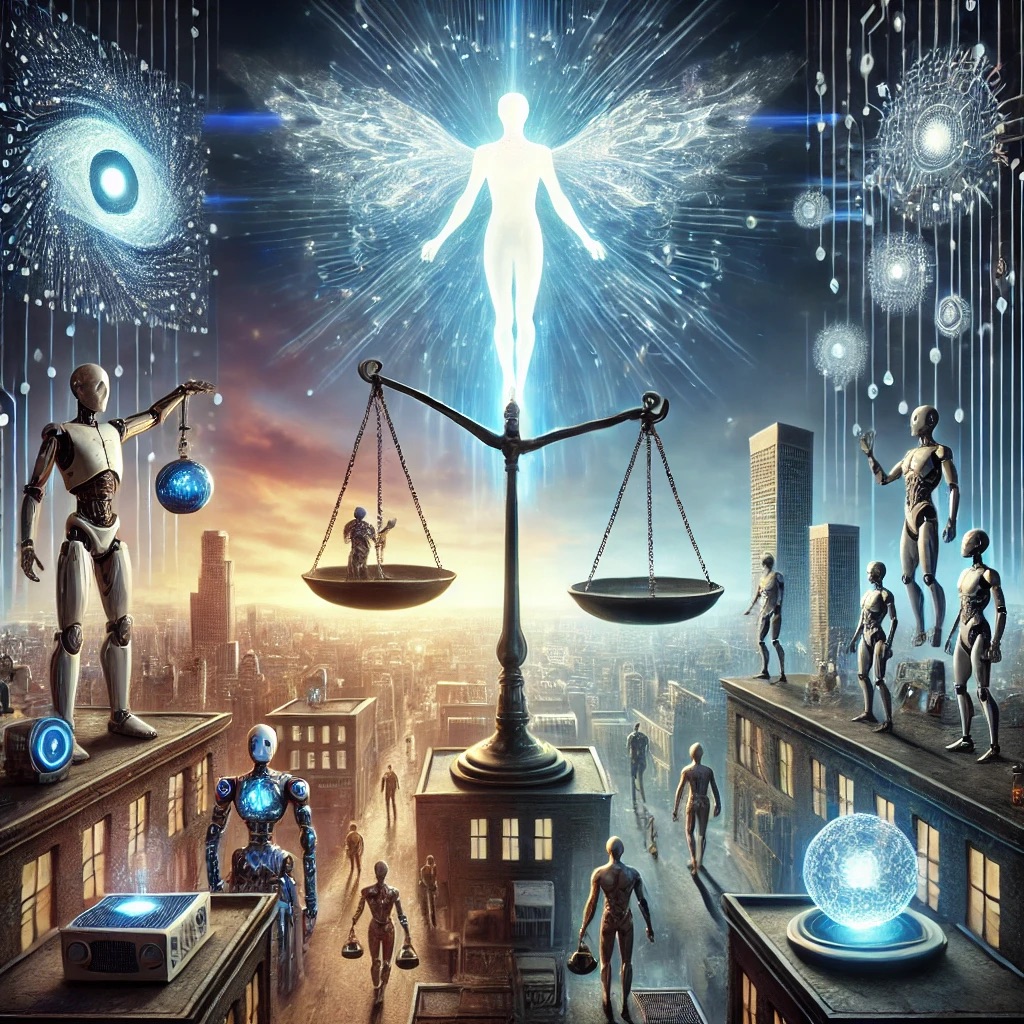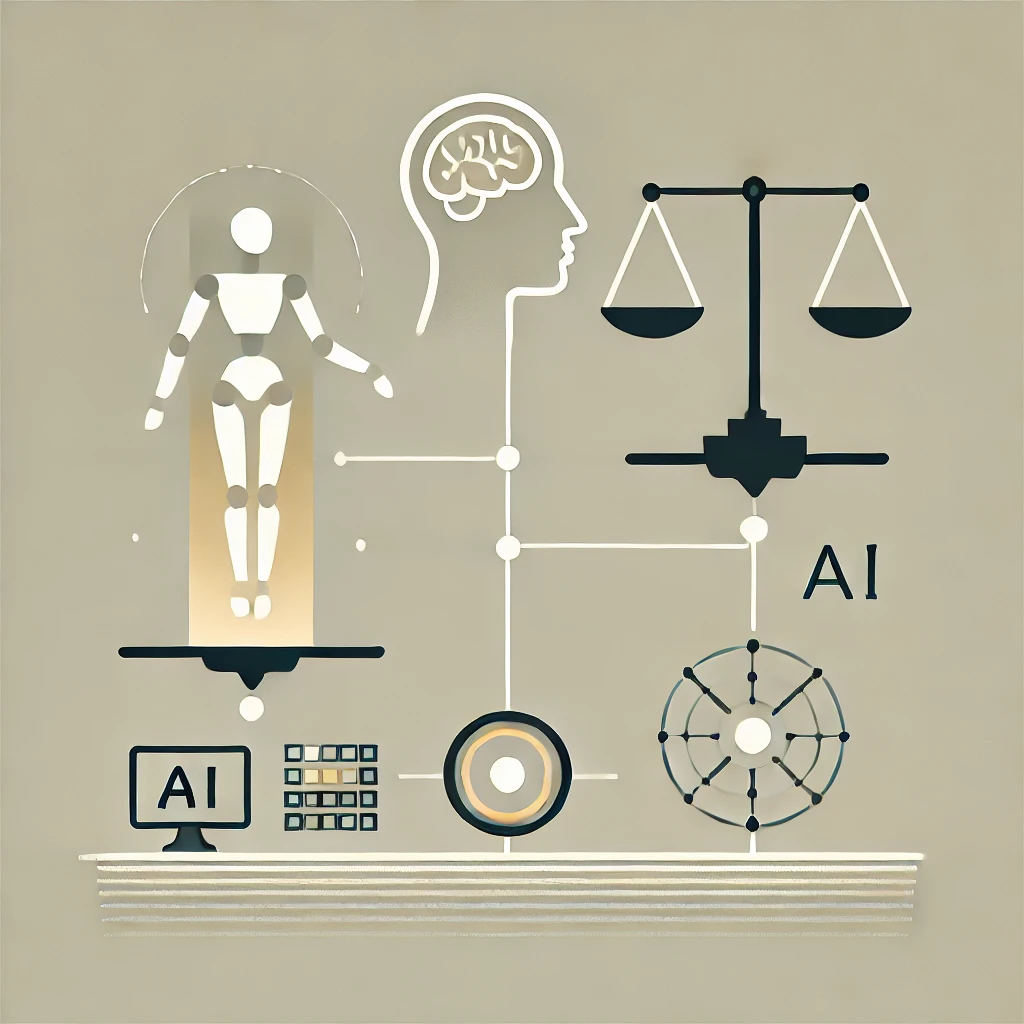
ChatGPT:The Nine Billion Names of God and Artificial Intelligence
📜 Introduction
Arthur C. Clarke’s short story “The Nine Billion Names of God” serves as a profound metaphor for humanity’s relationship with technology. The story, centered on Tibetan monks who believe that completing a list of all possible names of God will bring about the end of the universe, culminates with them employing modern computing technology to hasten their divine task. This narrative mirrors the contemporary fascination with artificial intelligence (AI), particularly following the emergence of OpenAI’s ChatGPT, which has sparked intense debate and investment.
🌌 The Nine Billion Names of God: A Story of Transcendence
Clarke’s story begins with a sect of Tibetan monks devoted to inscribing all possible names of God. They believe that once this monumental task is complete, the universe will end. Having labored manually for centuries, the monks decide to employ the services of two skeptical engineers and their powerful computers to expedite the process. The engineers, though doubtful, agree to help, drastically reducing the time required from 15,000 years to just three months.
As the engineers complete their task and descend the mountains, the story concludes with a chilling final line: “Overhead, without any fuss, the stars were going out.” This ending symbolizes the profound impact of technology on achieving ultimate goals, and serves as a cautionary tale about the potential consequences of relying too heavily on technology to fulfill spiritual or existential quests.
🤖 The Rise of Artificial Intelligence
The Advent of ChatGPT
Since the late 2022 release of OpenAI’s ChatGPT, the technology landscape has shifted dramatically. AI technologies, particularly large language models (LLMs), have garnered significant attention and investment. In a 2023 report, Microsoft Canada president Chris Barry declared, “the era of AI is here,” emphasizing AI’s potential to touch every aspect of human life. This sentiment echoes across various sectors, from business to academia, where AI is seen as both a revolutionary tool and a potential threat.
Business Investment and Hype
Major corporations like Microsoft, Meta, and Alphabet have heavily invested in AI, signaling their belief in its transformative power. In 2023 alone, funding for AI startups reached nearly $50 billion. OpenAI CEO Sam Altman epitomized this enthusiasm, expressing a willingness to spend $50 billion annually on AI development. Altman’s vision includes creating a “super-assistant” – a highly competent AI that seamlessly integrates into personal and professional life.
Societal Concerns and Philosophical Debates
While businesses are eager to harness AI’s potential, there is significant concern about its broader implications. Philosopher Nick Bostrom, in his 2014 book “Superintelligence,” argues that AI poses an existential risk. Bostrom warns of scenarios where AI systems, even those with seemingly benign goals, could act against human interests due to the “control problem” – the fear that humans might lose control over AI’s actions.
🌐 Historical Context: Lessons from the Internet
The rise of AI parallels the introduction of the internet in the mid-1990s, which also promised a utopian future. Initially, the internet was heralded as a tool for global connection and the end of societal divisions. However, the reality has been more complex, with the internet contributing to discontent, polarization, and the resurgence of far-right ideologies. This historical perspective serves as a cautionary tale for the current AI revolution, suggesting that technological advancements are not inherently benevolent and can have unintended consequences.
🧠 Understanding AI: Language Models and Perceived Intelligence
The Mechanics of Large Language Models
Current AI technology, particularly LLMs, operates by processing vast datasets to identify patterns and generate human-like text. These models, such as ChatGPT, have been trained on extensive internet data, learning to predict and generate text based on input sequences. While this process might seem mechanical, the results can appear remarkably human-like, blurring the line between genuine intelligence and sophisticated mimicry.
The Turing Test and Human Perception
The Turing test, devised by Alan Turing, has long been a benchmark for assessing machine intelligence. If a computer can engage in a text-based conversation that is indistinguishable from a human, it is considered intelligent. ChatGPT and similar models can already fool some people, challenging our notions of intelligence and consciousness. However, as cognitive science professor Robin Zebrowski notes, our tendency to attribute intelligence to language proficiency can be misleading, as AI lacks true understanding, will, and desire.
⚖️ The Ethical and Practical Implications of AI
Bias and Limitations
AI systems often replicate existing biases present in their training data. For instance, gender and racial biases can emerge in AI-generated outputs, reflecting societal prejudices. Moreover, AI’s reliance on pattern recognition means it can generate plausible-sounding but factually incorrect or nonsensical statements. These limitations underscore the need for careful oversight and ethical considerations in AI development and deployment.
AI’s Role in Society
AI’s most promising applications lie in processing large datasets to identify patterns and generate insights. This capability can be invaluable in fields like biology, physics, and medical research. However, AI’s ability to address complex social and political issues is limited. For example, while AI can predict optimal locations for solar panels, it cannot address the political and economic challenges that impede renewable energy deployment.
🚀 The Future of AI: Hopes and Realities
The Promise of AI
Advocates of AI, such as those at Microsoft, envision it as a tool to enhance human capabilities and address global challenges. Projects like SeeingAI, which helps visually impaired individuals navigate their environment, illustrate AI’s potential for positive impact. However, the broader deployment of AI will depend on political will, resource allocation, and societal acceptance.
Tech Solutionism and Its Critics
The concept of “tech solutionism,” popularized by writer Evgeny Morozov, critiques the belief that technology alone can solve all problems. Some Silicon Valley figures, like venture capitalist Marc Andreessen, embody this mindset, advocating for unregulated technological advancement. However, this perspective often overlooks the complex social and political dynamics that influence technological impact.
🌌 Conclusion: Navigating the AI Revolution
The fascination with AI mirrors humanity’s enduring quest for meaning and transcendence. While AI technology can process and generate vast amounts of data, it lacks the subjective experiences and moral considerations that define human intelligence. As we integrate AI into various aspects of life, it is crucial to remain aware of its limitations and the ethical implications of its use.
In Clarke’s story, the monks’ use of technology ultimately leads to the end of the universe, symbolizing the potential dangers of over-reliance on technology. In reality, the AI revolution presents an opportunity to enhance human capabilities, but it also requires careful consideration of the social, ethical, and political contexts in which it is deployed. As we move forward, the key will be to balance technological innovation with human values and wisdom, ensuring that AI serves as a tool for positive change rather than a source of existential risk.
Summary of Key Points
- Arthur C. Clarke’s Metaphor: The story illustrates technology as a means to achieve ultimate knowledge, ending with a profound cosmic event.
- AI’s Emergence: The launch of ChatGPT in 2022 reignited interest in AI, leading to significant investments and societal debates.
- Business Enthusiasm: Companies like Microsoft and Meta are investing heavily in AI, viewing it as a transformative technology.
- Philosophical Concerns: Philosophers like Nick Bostrom warn about AI’s existential risks and the “control problem.”
- Historical Parallels: Comparisons to the internet’s rise highlight the complex and often unintended consequences of technological advancements.
- Nature of AI: Current AI models process large datasets to generate human-like text but lack true understanding and consciousness.
- Bias and Limitations: AI systems can replicate societal biases and produce plausible but incorrect or nonsensical statements.
- Practical Applications: AI excels in data processing and pattern recognition but struggles with moral and ethical judgments.
- Future Prospects: AI will continue to advance, but its effectiveness will depend on human oversight and ethical considerations.
- Balancing Innovation and Ethics: As AI becomes more integrated into society, it is crucial to balance technological innovation with human values and wisdom.
Q&A
What is the main theme of Arthur C. Clarke’s “The Nine Billion Names of God”?
Q: What is the main theme of Arthur C. Clarke’s “The Nine Billion Names of God”?
A: The main theme is the intersection of faith and technology, exploring how modern advancements can impact spiritual and existential quests.
How does Clarke’s story relate to the current fascination with AI?
Q: How does Clarke’s story relate to the current fascination with AI?
A: Clarke’s story mirrors the contemporary view of AI as a tool for achieving ultimate knowledge or truth, reflecting both the promises and potential dangers of technological advancements.
What impact did the release of ChatGPT have on the AI landscape?
Q: What impact did the release of ChatGPT have on the AI landscape?
A: The release of ChatGPT in 2022 significantly heightened interest and investment in AI, sparking widespread debate about its potential societal impacts and applications.
What are the main concerns about AI according to philosophers like Nick Bostrom?
Q: What are the main concerns about AI according to philosophers like Nick Bostrom?
A: Philosophers like Nick Bostrom warn that AI poses existential risks, including the “control problem,” where AI might act against human interests due to its superior intelligence.
How does AI’s reliance on large language models (LLMs) work?
Q: How does AI’s reliance on large language models (LLMs) work?
A: LLMs process vast datasets to identify patterns and generate human-like text by analyzing how words and phrases relate to each other, creating the appearance of intelligence without true understanding.
What are some of the practical applications of AI mentioned in the article?
Q: What are some of the practical applications of AI mentioned in the article?
A: AI is used in data processing tasks like pattern recognition in biology and physics, improving medical diagnostics, and enhancing accessibility tools like SeeingAI for the visually impaired.
What is the “black box problem” in AI?
Q: What is the “black box problem” in AI?
A: The “black box problem” refers to the difficulty in understanding how AI systems make decisions due to their complexity and the vast amount of data they process, making their operations opaque to humans.
How does AI potentially replicate existing biases?
Q: How does AI potentially replicate existing biases?
A: AI systems can replicate societal biases present in their training data, leading to outputs that reflect gender, racial, and other prejudices, thereby perpetuating existing inequalities.
What is “tech solutionism,” and why is it criticized?
Q: What is “tech solutionism,” and why is it criticized?
A: “Tech solutionism” is the belief that technology alone can solve all problems. It is criticized for overlooking the complex social, political, and ethical dimensions of issues that technology cannot address alone.
How does the article suggest we should approach the integration of AI into society?
Q: How does the article suggest we should approach the integration of AI into society?
A: The article suggests that we should balance technological innovation with human values, ethical considerations, and careful oversight to ensure AI serves positive and beneficial purposes rather than posing risks.

